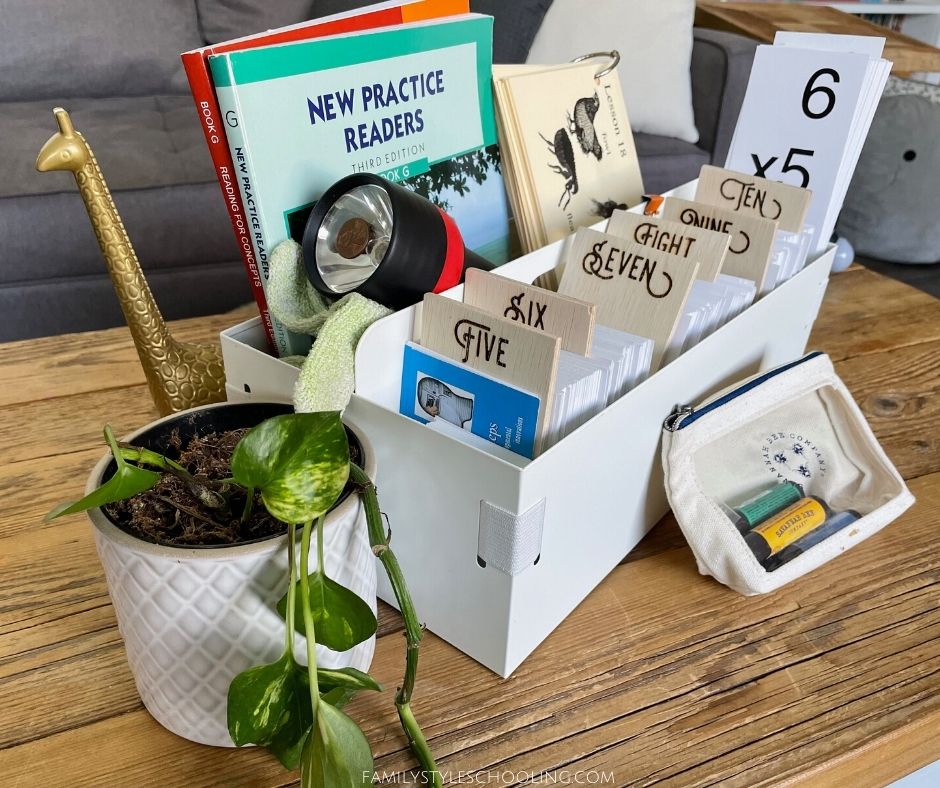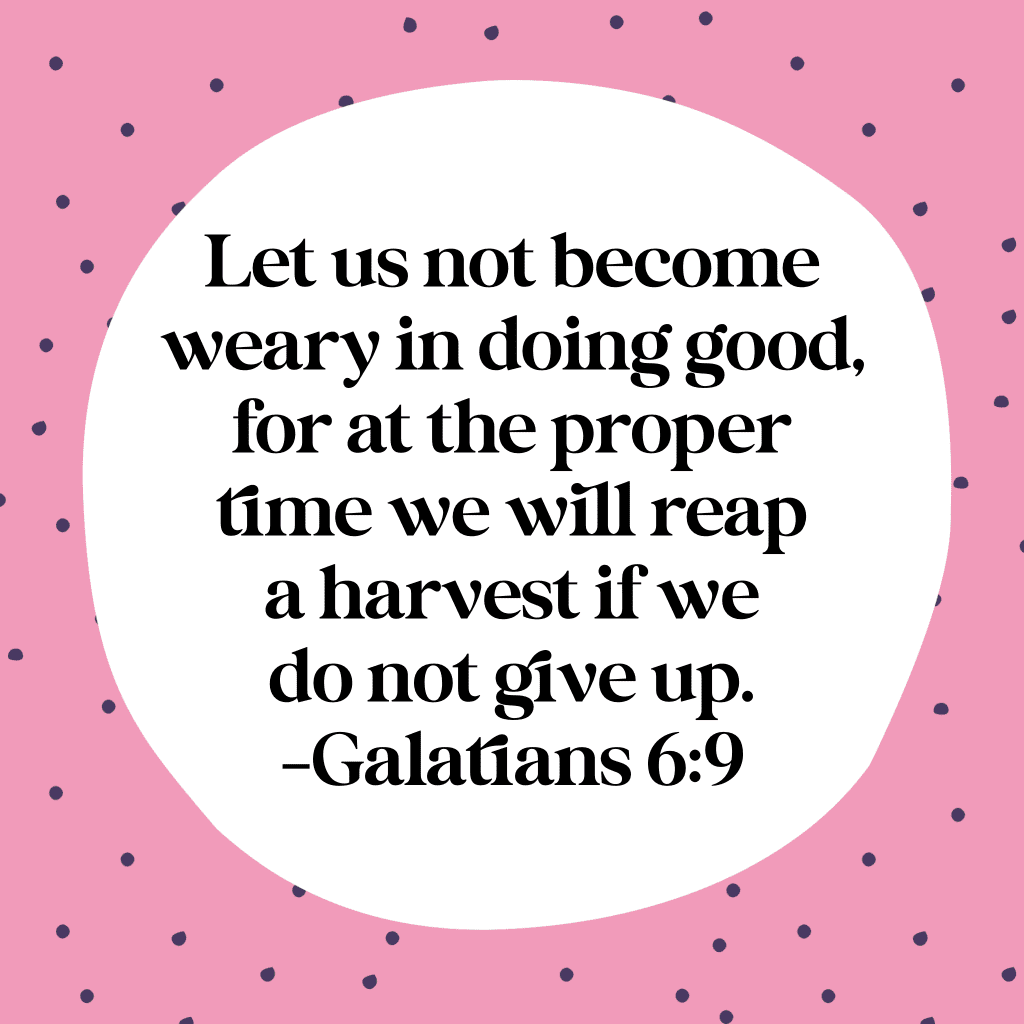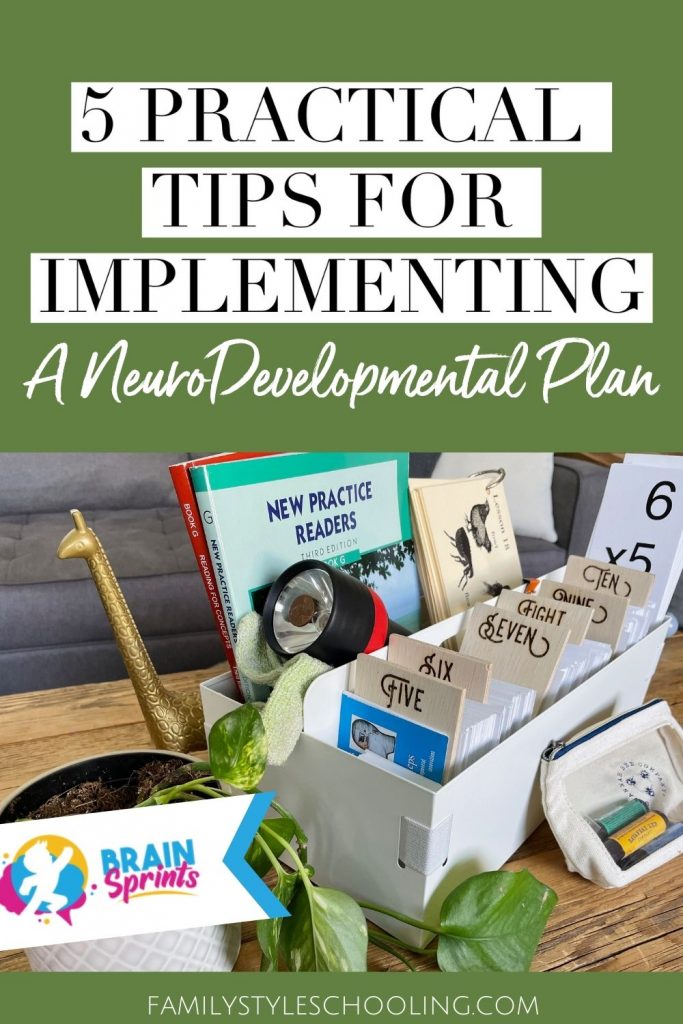5 Practical Tips for Implementing a NeuroDevelopmental Plan
This week, I’ve been sharing our journey with Brain Sprints and how a NeruoDevelopmental plan (INP) has worked for us. I’ve given you some inside perspectives on how working from a physical, mental, and spiritual perspective can have some powerful ramifications.
Today, I’m wrapping up my series with a very practical “how-to” version of all of the things involving implementing an INP: managing your materials, structuring your time, and rewarding your efforts.
1. Organizing Your INP Supplies
After your assessment, you head home to await your INP. Because it is a specialized plan and not just a generic curriculum, it takes a couple of days for your INP to show up on the website.
The first couple of weeks, Dr. Jan encourages you to get familiar with the plan:
- Watch all of the videos
- Read all of the handouts
- Gather supplies you have
- Order supplies you need
It’s nice to have a little bit of time to figure out what you’re supposed to be doing because everything feels very foreign at first!
Organizing Your Instructions
It sounds a little crazy, but you must start with organizing your instructions. When you leave your first assessment, they give you a binder to keep all of these documents in one place.
Honestly, I don’t work well with binders. I knew that I needed a system that could travel easily with me so that I wouldn't have an excuse to skip a day because we didn’t have what we needed. So, I used GoodNotes on my iPad to keep everything in one place.
With everything digitally organized, I could have all of our plans and instructions with me at all times, so if needed, we could work on activities on the go.
Organizing Your Materials
One of the first instructions Dr. Jan gives for when you get home is to find one place to keep all of your materials. The activities are short, and you can implement your plan efficiently if everything is together.
But imagine if you’re changing activities every two minutes, and in each of those changes, you have to hunt down a pencil grip, the flashlight, or literally ask, “Where’s Waldo!” When everything is together in one place, you can move seamlessly from one activity to the next without adding unnecessary time to your plan.
I also know how things work in my house. Just as soon as you settle into a routine, something happens to threaten your rhythm—anything from hosting family to zoom calls or traveling—we couldn’t anchor our storage to one place in the house.
So I looked to IKEA for help and found this $15 desk caddy that looked perfect for housing all of the do-dads we needed for our plan! The best part is that I could pack it up quickly if we ever wanted to hit the road and keep working on our program.

2. Creating an INP Routine
We started our plan in the summer, which meant we didn’t have our regular school to fit into our schedule. This was an excellent way for us to start because it helped us focus on the INP and not worry about all of the other things.
But I knew the day would come where Classical Conversations would start back up, and we’d have other educational demands to balance. So we purposed to find our favorite routine to work efficiently to have time for other pursuits.
Artistic Implementation of the Plan
We tested out several different organizational strategies, but we finally settled on a routine that allowed us to adjust as needed. I know that sounds almost contradictory, but let me explain because I felt like an artist when I was trying to get everything to fit without their brains frying!
- The Normal Day Routine was the plan for when there was nothing extra to navigate in our day. Audrey would get up and do her floor activities on her own, and then we numbered the activities we needed to do together. We’d try not to add any extra chatting in-between exercises. Then she’d follow up with the activities she could complete independently. A typical day would take her around 2.5 hours total, with about 1.5 hours spent working with me. We could be done by lunch if we were efficient (which didn’t always happen, but we all felt better when it did).
- The Special Day Routine - Occasionally, there were times when something special was happening in a day, so we needed to adjust our plan a bit. Audrey would always start with her floor activities on these days. Then we’d work through the first round of the bolded items (not all activities have equal weight in the program, which allows a little flexibility). If we had time, we’d work back through the second round of those bolded items and see if we had time for one or two extras.
- The Work Around Routine - Then there were times we were traveling, and we needed to work around things we didn’t have any control over. In those times, we found creative ways just to keep making progress. We could do a little activity in the car while we waited or use audiobooks to fill our drive time with a little bit of narration.
- The “Family is in Town” Routine - And then there were just times when we set the work aside and enjoyed cousin time. If you work hard when you can (and guard those days), you can rest on the days you need to make time for others. The program isn’t a race—you still need to live while you’re working it.
3. Creating a Positive Learning Environment
One of the most important aspects of my preparation involved creating the best possible work environment. There are so many factors that go into helping someone work through their INP. Here are some elements that helped us:
- A quiet space - it’s tough to focus on auditory processing activities if there is a lot of background noise to filter out.
- A clean space - other types of noise are also distracting. If your workspace is messy, it can be visually distracting. It doesn’t have to be perfectly clean, but a little bit of tidying up can go a long way.
- An encouraging spirit - the work is very emotional. I know it sounds crazy to think that repeating a number sequence might be emotional work, but it is challenging when you work at a therapeudic level. They need all of the encouragement they can get to strengthen those muscles.
- An inspiring perspective - it is also very powerful to minister to the one going through the plan by reminding them of how hard their work is and how far they’ve come. Celebrate the small steps, the faithfulness to continue, and the character they’re developing through this trail.
- An unoffendable heart - expect some days not to go well. Expect bad attitudes and frustration when their brains won’t work as they want. Sometimes it gets worse before it gets better. Determine not to be offended by any of these responses. Love them bravely through the hard times as well as the good times.
4. Celebrate the Journey
Dr. Jan encouraged us to create a reward system to promote working with excellence in the plan. Some examples were sweet treats like jellybeans or monetary motivation. I have used those successfully in the past, but this time it felt like my 15-year-old needed a different type of motivation to inspire working hard: playing hard.
Let me explain. Historically, Audrey would rather be outside running around or climbing a tree rather than reading quietly inside. She built an outdoor clubhouse with her dad, and she’s gifted on rip-stick or skateboard.
Since we were walking my mom through cancer treatments at the time and were more anchored to home, and I was also looking for a way to encourage my 44-year-old husband to keep working his INP, we came up with an option to play hard as a family: we bought paddleboards.

There are several lakes just a short drive from our house, and we found paddleboarding to be a perfect way to celebrate the hard brain sprinting we’d done throughout the week. When you’re on a paddleboard, you literally can’t think of anything other than what you’re doing. So I guess we rewarded ourselves with a bit of brain resting time.
5. Get Help From Your Team
Working through an INP is hard, emotional work for everyone involved. Mom, you can’t carry it all on your own. If your kids are little and you can’t give as much dedicated time to one child, enlist your husband to help, or an older sibling, or a neighbor.
If those don’t exist, communicate with your NeuroDevelopmentalist. They have a wealth of experience they can draw from to help you find ways to get your plan done.
Also, it just might take you longer, and that’s okay too. Development is not a race; it’s just tiny steps faithfully taken that add up to progress. Those little giant steps will have a profound impact on everyone’s future. It is worth the effort. As Paul encourages, “Let us not become weary in doing good, for at the proper time we will reap a harvest if we do not give up.”

If you think your child could benefit from a NeuroDevelopmental plan, you can schedule a free 15-minute consultation. This was very helpful for me in deciding how I could help Audrey in her journey.
Dr. Jan shares more great info on her YouTube and Rumble channels "Brain Coach Tips."
You can talk to her in person at the THSC convention this year in Allen and The Woodlands, as well as Teach Them Diligently in Roundrock.
Betsy Strauss is an unexpected homeschooler, mother of three, who is in a relationship with a sweet man for life. She loves reading books, drinking coffee, and learning anything with her kids.


